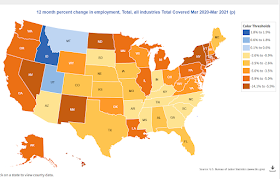The total economic impact figures include estimates of spending at lodging, transportation, food and beverage, retail, recreation, venue rental, and business services companies. The data also include estimates of indirect impact and induced economic impact – the money spent between businesses to support this activity and the money spent by employees of those companies. The entire Championship run generated $1.107 million in total local taxes.VISIT Milwaukee says hotels were the biggest beneficiaries, due to a bump in occupancy and revenue, as well as the Bucks themselves along with other “recreation” businesses. But even with the Bucks’ run and the fading of COVID in the first half of Summer, employment in the ;eisure and hospitality industries haven’t come close to recovering the job losses that we saw in 2020. And with staffing not keeping up with sales, is no coincidence that wages have greatly risen in these industries, as shown by this recent summary from the Milwaukee Business Times.
Wisconsin did see stronger wage growth in the leisure and hospitality sector, which has been among the areas struggling to hire amidst the COVID-19 pandemic. In August, the average hourly leisure and hospitality wage in Wisconsin was $16.63, up $1.74 or 11.7% from August 2020. July saw a 9.8% year-over-year increase and June’s increase was 7.7%. The 9.7% average increase over the summer months ranked 22nd in the country. Many of Wisconsin’s neighboring states saw similar increases, including 10% averages in Iowa and Indiana, 9.9% in Illinois and 9.3% in Michigan. Minnesota was an outlier with a 3.6% average increaseThe Wisconsin Policy Forum noted this disparity between sales and employment in food services in a recent report, and also says that data indicates that a lot of bars and restaurants closed in the COVID World and have not been fully replaced.
While no data source is currently available that could show precisely how many restaurants and bars in Wisconsin did not survive the pandemic, limited data from the state’s Department of Agriculture, Trade, and Consumer Protection (DATCP) suggests that hundreds more restaurants closed in Wisconsin than opened in 2020. According to DATCP, 418 state-licensed restaurants and other retail food establishments that serve meals closed in 2020, while 218 opened. In contrast, the same database shows new restaurant openings outpaced closures in 2019 and have again in 2021 through August – another positive indicator of the sector’s recovery.What we have not seen yet is how the re-emergence of COVID in August and September has affected business and staffing at bars, restaurants and accommodations in the state. And if whether Milwaukee’s service industries are into another big boost in October from another postseason run from a local sports team.
Yep, I was there.








































